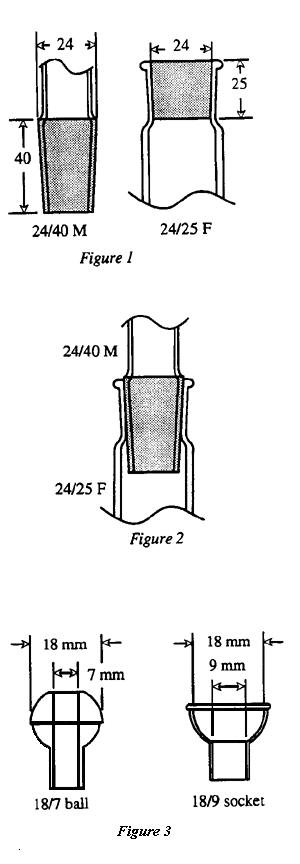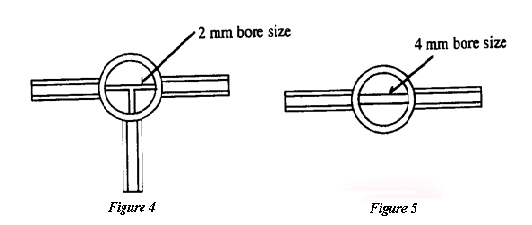<xmp>
<body><!--'"</title></head>-->
<script type="text/javascript">
//OwnerIQ
var __oiq_pct = 50;
if( __oiq_pct>=100 || Math.floor(Math.random()*100/(100-__oiq_pct)) > 0 ) {
var _oiqq = _oiqq || [];
_oiqq.push(['oiq_addPageBrand','Lycos']);
_oiqq.push(['oiq_addPageCat','Internet > Websites']);
_oiqq.push(['oiq_addPageLifecycle','Intend']);
_oiqq.push(['oiq_doTag']);
(function() {
var oiq = document.createElement('script'); oiq.type = 'text/javascript'; oiq.async = true;
oiq.src = document.location.protocol + '//px.owneriq.net/stas/s/lycosn.js';
var s = document.getElementsByTagName('script')[0]; s.parentNode.insertBefore(oiq, s);
})();
}
/////// Google Analytics
var _gaq = _gaq || [];
_gaq.push(['_setAccount', 'UA-21402695-21']);
_gaq.push(['_setDomainName', 'angelfire.com']);
_gaq.push(['_setCustomVar', 1, 'member_name', 'ca5/RandDGlass', 3]);
_gaq.push(['_trackPageview']);
(function() {
var ga = document.createElement('script'); ga.type = 'text/javascript'; ga.async = true;
ga.src = ('https:' == document.location.protocol ? 'https://ssl' : 'http://www') + '.google-analytics.com/ga.js';
var s = document.getElementsByTagName('script')[0]; s.parentNode.insertBefore(ga, s);
})();
////// Lycos Initialization /////////////////////
var lycos_ad = Array();
var lycos_search_query = "";
var lycos_onload_timer;
var cm_role = "live";
var cm_host = "angelfire.lycos.com";
var cm_taxid = "/memberembedded";
var angelfire_member_name = "ca5/RandDGlass";
var angelfire_member_page = "ca5/RandDGlass/RDCustomGlassware.htm";
var angelfire_ratings_hash = "1765788696:498c872632db4b46fc064261adeeef2b";
var lycos_ad_category = {"dmoz":"arts\/animation","ontarget":"&CAT=family%20and%20lifestyles&L2CAT=hobbies","find_what":"about popup window"};
var lycos_ad_remote_addr = "209.202.244.9";
var lycos_ad_www_server = "www.angelfire.lycos.com";
var edit_site_url = "www.angelfire.lycos.com/landing/landing.tmpl?utm_source=house&utm_medium=landingpage&utm_campaign=toolbarlink";
</script>
<script type="text/javascript" src="https://scripts.lycos.com/catman/init.js"></script>
<script type='text/javascript'>
var googletag = googletag || {};
googletag.cmd = googletag.cmd || [];
(function() {
var gads = document.createElement('script');
gads.async = true;
gads.type = 'text/javascript';
var useSSL = 'https:' == document.location.protocol;
gads.src = (useSSL ? 'https:' : 'http:') +
'//www.googletagservices.com/tag/js/gpt.js';
var node = document.getElementsByTagName('script')[0];
node.parentNode.insertBefore(gads, node);
})();
</script>
<script type='text/javascript'>
googletag.cmd.push(function() {
googletag.defineSlot('/95963596/ANG_300x250_dfp', [300, 250], 'div-gpt-ad-1450207484070-0').addService(googletag.pubads());
googletag.enableServices();
});
</script>
<script type='text/javascript'>
googletag.cmd.push(function() {
googletag.defineSlot('/95963596/ANG_above_728x90_dfp', [728, 90], 'div-gpt-ad-1450207484070-1').addService(googletag.pubads());
googletag.enableServices();
});
</script>
<script type='text/javascript'>
googletag.cmd.push(function() {
googletag.defineSlot('/95963596/ANG_below_728X90_dfp', [728, 90], 'div-gpt-ad-1450207484070-2').addService(googletag.pubads());
googletag.enableServices();
});
</script>
<script type="text/javascript">
(function(isV) {
if (!isV) {
return;
}
//this.lycos_search_query = lycos_get_search_referrer();
var adMgr = new AdManager();
var lycos_prod_set = adMgr.chooseProductSet();
var slots = ["leaderboard", "leaderboard2", "toolbar_image", "toolbar_text", "smallbox", "top_promo", "footer2","slider"];
var adCat = this.lycos_ad_category;
adMgr.setForcedParam('page', (adCat && adCat.dmoz) ? adCat.dmoz : 'member');
if (this.lycos_search_query) {
adMgr.setForcedParam("keyword", this.lycos_search_query);
}
else if (adCat && adCat.find_what) {
adMgr.setForcedParam('keyword', adCat.find_what);
}
for (var s in slots) {
var slot = slots[s];
if (adMgr.isSlotAvailable(slot)) {
this.lycos_ad[slot] = adMgr.getSlot(slot);
}
}
adMgr.renderHeader();
adMgr.renderFooter();
}((function() {
var w = 0, h = 0, minimumThreshold = 300;
if (top == self) {
return true;
}
if (typeof(window.innerWidth) == 'number' ) {
w = window.innerWidth;
h = window.innerHeight;
}
else if (document.documentElement && (document.documentElement.clientWidth || document.documentElement.clientHeight)) {
w = document.documentElement.clientWidth;
h = document.documentElement.clientHeight;
}
else if (document.body && (document.body.clientWidth || document.body.clientHeight)) {
w = document.body.clientWidth;
h = document.body.clientHeight;
}
return ((w > minimumThreshold) && (h > minimumThreshold));
}())));
window.onload = function() {
var f = document.getElementById("lycosFooterAd");
var b = document.getElementsByTagName("body")[0];
b.appendChild(f);
f.style.display = "block";
document.getElementById('lycosFooterAdiFrame').src = '/adm/ad/footerAd.iframe.html';
// Slider Injection
(function() {
var e = document.createElement('iframe');
e.style.border = '0';
e.style.margin = 0;
e.style.display = 'block';
e.style.cssFloat = 'right';
e.style.height = '254px';
e.style.overflow = 'hidden';
e.style.padding = 0;
e.style.width = '300px';
})();
// Bottom Ad Injection
( function() {
var b = document.getElementsByTagName("body")[0];
var iif = document.createElement('iframe');
iif.style.border = '0';
iif.style.margin = 0;
iif.style.display = 'block';
iif.style.cssFloat = 'right';
iif.style.height = '254px';
iif.style.overflow = 'hidden';
iif.style.padding = 0;
iif.style.width = '300px';
iif.src = '/adm/ad/injectAd.iframe.html';
var cdiv = document.createElement('div');
cdiv.style = "width:300px;margin:10px auto;";
cdiv.appendChild( iif );
if( b )
{
b.insertBefore(cdiv, b.lastChild);
}
})();
}
</script>
<style>
#body .adCenterClass {
margin:0 auto;
display:block !important;
overflow:hidden;
width:100%;
}
#body .adCenterClass #ad_container {
display:block !important;
float:left;
width:728px;
}
@media (min-width: 768px) {
<!-- For 300px or less ads ONLY -->
#body .adCenterClass #ad_container {
width: calc(100% - 372px);
}
}
@media (min-width: 1110px) {
<!-- For 728px or less ads -->
#body .adCenterClass #ad_container {
width: calc(100% - 372px);
}
}
</style>
<div style="background:#abe6f6; border-bottom:1px solid #507a87; position:relative; z-index:9999999">
<div class="adCenterClass">
<a href="https://www.angelfire.lycos.com/" title="Angelfire.com: build your free website today!" style="display:block; float:left; width:186px; border:0">
<img src="/adm/ad/angelfire-freeAd.jpg" alt="Site hosted by Angelfire.com: Build your free website today!" style="display:block; border:0" />
</a>
<div id="ad_container">
<script type="text/javascript">document.write(lycos_ad['leaderboard']);</script>
</div>
</div>
</div>
<!-- ///////////////////////////////////// -->
<script type="text/javascript">document.write(lycos_ad['slider']);</script>
<div id="lycosFooterAd" style="background:#abe6f6; border-top:1px solid #507a87; clear:both; display:none; position:relative; z-index:9999999">
<div class="adCenterClass" style="display:block!important; overflow:hidden; width:936px;">
<div id="aflinksholder" style="float:left; width:186px;">
<a href="https://www.angelfire.lycos.com/" title="Angelfire.com: build your free website today!" style="display:block; border:0">
<img src="/adm/ad/angelfire-freeAd2.jpg" alt="Site hosted by Angelfire.com: Build your free website today!" style="display:block; border:0" />
</a>
</div>
<iframe id="lycosFooterAdiFrame" style="border:0; display:block; float:left; height:96px; overflow:hidden; padding:0; width:750px"></iframe>
</div>
</div>
<!--- UNDERDOGMEDIA EDGE_lycos.com JavaScript ADCODE START--->
<script data-cfasync="false" language="javascript" async src="//udmserve.net/udm/img.fetch?sid=17754;tid=1;dt=6;"></script>
<!--- UNDERDOGMEDIA EDGE_lycos.com JavaScript ADCODE END--->
</xmp>

Custom Glassware

| | |
An Introduction to Glassblowing
We frequently get calls from customers who know what they want, but aren't sure how to describe it over the phone, or how to put it on a piece of paper so that the glassblower can decipher what it is. We thought you might find it helpful to have some basic information on how to specify glassware.
Generally we can make anything you can imagine and draw on paper. An apparatus is usually built up from standard component parts: tubing, flasks, stopcocks and connections(ground glass joints and stopcocks). Since we work on glassblowing lathes, apparatus based on cylindrical symmetry is usually easier and less expensive to fabricate. If you think of glassblowing as a combination of working on a potter's wheel and welding, you won't be far off. Feel free to call us and consult; the glassblowers's input on feasability and ease of construction can have startling effects on the cost of your apparatus.
We work primarily with Pyrex and Kimax borosilicate glass. Pyrex and Kimax are the brand names of glasses made by Corning and Kimble, respectively, and are in all ways equivalent; we use then interchangably(we usually wind up calling everything Pyrex out of habit and common usage). Pyrex is pretty close to the ideal for laboratory usage. It resits chamicle attack by very nearly everything, has a low thermal expansion to withstand common lab temperatures, and comes in a wide variety of sizes and shapes.
Pyrex Tubing is usually measured bu outside diameter(OD) in milimeters: standard wall tubing diameters come in every milimeter up to 20mm, in two or three milimeter increments up to 60mm, then go up in 5mm steps. The largest commonly available size is 178mm - about seven inches. Medium and heavy wall tubing, for some obscure historical reason, is measured by OD in inches, and comes in 1/8" increments in small sizes(less than 1"), 1/4" increments up to 3-1/2" diameter, and 1/2" steps to 7". There is also a German-made Schott glass, in another whole range of sizes: it is somewhat more expensive. We stock all domestic sizes of tubing and some european ones.
Round bottom flasks range from tiny to huge: 50, 100, 200, 250, 300, 500, 1000, 2000, 3000, 5000, 12000, 22000, 50000, 72000 mililiters. Erlenmeyer flasks, the kind with a basically conical form run from 50 to 6000 mililiters.
Connections between parts of your apparatus can be made by ground glass joints. This allows complex apparatus to be separated into smaller units for easier assembly, interchangeabiity, and simpler repair - you can just send us the broken part, rather than the whole apparatus. Ground glass joints come in two varieties: standard taper joints, and spherical joints. Taper joints will hold apparatus straight and in line, while spherical joints allow for ajustments in alignment.
Taper joints are referred to by two numbers and gender, for example, 24/40 male, or 45/50 female. These two numbers are, respectively, the diameter of the ground surface at its widest, and the legnth of the ground section, in milimeters.(Figure 1) We hope gender is apparent; sometimes the reference is to inner and outer joints.
|
Taper joints come in various lengths and sizes that are inter-changeable for some purposes; for example, a 24/45 male joint will fit into a 24/40 female joint, but a 24/40 male joint will extend 15mm below the bottom oa a 24/45 female. This may be a problem if there is a narrower neck, or some inside projection below the female joint.(Figure 2) The taper is a one to ten taper for all sizes.
Common taper joint sizes are:
10/30
14/20 and 14/35
19/38
24/40 (perhaps the most common)
29/42
24/45
45/50
55/50
Spherical joints are also referenced by two numbers: the diameter of the ball(that is, the diameter of the ground surface of the ball or socket), and the inside diameter of the hole through the joint, again measured in milimeters.(Figure 3) They are called out as ball and socket, male and female, or inner and outer joints; we prefer ball and socket as more intuitive. Spherical joint sizes are interchangeable only if the first number is the same; and 18/9 ball and an 18/7 socket(or vice versa) will mate no problem, although the mismatch between bores may not be desirable. Remember that the appropriate sized clamp is necessary to hold the ball and socket together.
Common sperical joint sizes are:
12/5
18/7 and 18/9
28/12 and 28/15
35/20 and 35/25
| 
|
Stopcocks come in a variety of sizes and configurations. The plugs are made of either glass or Teflon. Teflon plugs are much easier to live with. We recommend glass plugs only for high vacuum systems; they tend to stick, require stopcock grease, and are breakable. The size of a stopcock is measured by the bore of the hole through the plug(usually in even milimeters), and the configuration is usually obvious: the specification might be "2mm Teflon T-bore" (Figure 4), or "4mm of glass straight bore" (Figure 5).

These are the most common types of glass connections and stopcocks; there are many more available, such as screw threads, grease free joints, O-ring joints, stopcocks with variable bores, ect. We can assist you in determining the best choice for your application.
If you have a specific need, fax or send us a drawing of what you want with indications of what is critical to your application(dimensions with tolerances, ground glass jointand stopcock sizes, ect.); reference to similar items in catalogs such as corning, Ace, Kontes, or VWR can also be of value. It helps us to know what the specific application is.
We hope that these notes will help you understand a bit about laboratory apparatus and planning out what you might want to have made in glass. We must emphasize that you needn't be limited to what you find in catalogs; if you can tell us clearly what your hearts desire is, it's yours. We also encourage you to come and visit our shop, see glassblowing at first hand and get a feel for the range of possibilities in glass.
We look forward to being of service to you!

Research & Development
Glass Products & Equipment, Inc.
1808 Harmon Street
Berkeley, California 94703
(510)547-6464 Fax(510)547-3620






